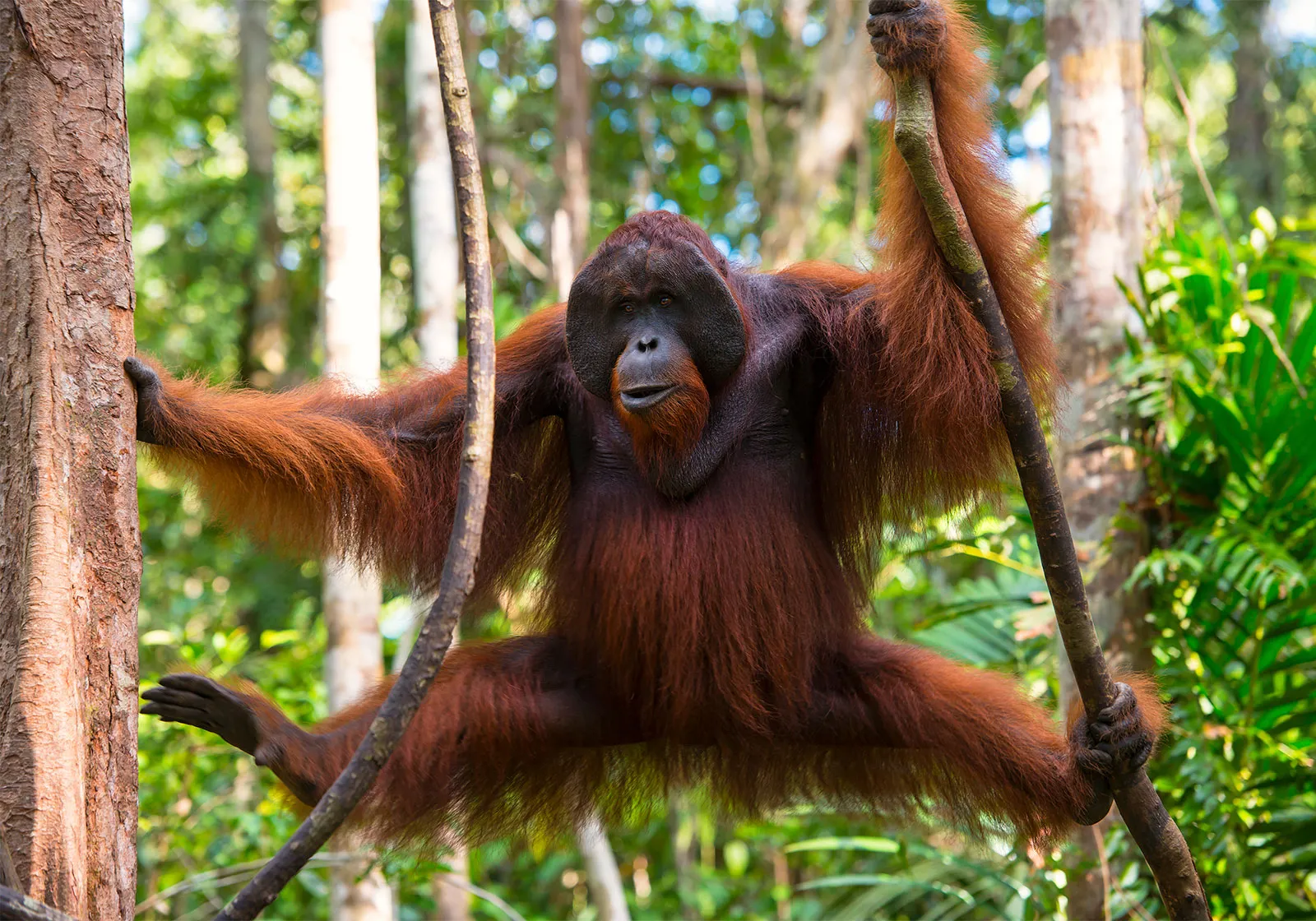
Apes are so closely related to humans that some zoologists divide them into three kinds: great apes, lesser apes and us humans! Great apes are almost human-shaped, though they tend to have longer arms, big, protruding jaws, and are covered in fur. Gorillas are the biggest of the apes, while chimpanzees are man’s closest relative and the smartest of the apes. They can communicate with varied vocal sounds, gestures and facial expressions. Lesser apes include gibbons and monkeys. They are agile apes that live in Southeast Asian forests, and can swing swiftly from branch to branch.
Apes are humanity’s closest living relatives. In fact, people are apes; humans share about 98 percent of their DNA with chimpanzees. The non-human types of apes are divided into two groups: great apes — gorillas, bonobos, chimpanzees and orangutans — and lesser apes — gibbons and siamangs.
Apes are not monkeys; they belong to different branches of the Simian infraorder, and there are several physical differences. Apes do not have tails, while most monkeys do, and apes are typically larger than monkeys, according to the Smithsonian National Zoological Park. Apes’ noses are short and broad, while monkeys’ noses are more snout-like. Apes also have larger brains than monkeys, and they are capable of using tools and learning language.
Just like their classifications suggest, great apes are large, while lesser apes are small. Gorillas, the largest of the apes, typically are about 4.5 to 5.5 feet (1.37 to 1.67 meters) tall when upright and weigh 200 to 450 lbs. (91 to 204 kilograms), according to Defenders of Wildlife. Mountain gorillas, though, can grow to 6 feet tall and weigh 300 to 485 lbs. (135 to 220 kg). Orangutans are the world’s largest tree-dwelling animal. They grow to 4 to 4.5 feet (1.2 to 1.4 m) tall and weigh 90 to 200 lbs. (41 to 91 kg). Gibbons and siamangs are much smaller than great apes. They typically weigh around 9 to 28 lbs. (3.9 to 12.7 kg). Siamangs grow to 29.5 to 35.5 inches (75 to 90 centimeters) tall from head to rump, according to the San Diego Zoo.
The habitats of great apes and lesser apes are very limited. The great apes live in Africa and Asia, according to the National Zoo. They tend to live in jungles, mountainous areas and savannas.
Lesser apes live in Asia in evergreen tropical rainforests and monsoon forests. Siamangs prefer to live 80 to 100 feet (25 to 30 m) in the air in the trees found in Malaysia and Indonesia.
Apes are herbivores for the most part, but they also may eat small animals or bugs to supplement their diet. Gibbons, for example, eat mostly fruit, but they also munch on leaves, flowers and insects. Orangutans eat a fruit diet that is supplemented with vegetation, invertebrates, mineral-rich soil and small vertebrates. A chimp’s diet is mainly fruits supplemented with insects, birds and small mammals, according to the Center for Great Apes.
Apes have offspring much like humans. They have live births after a gestation period of around eight and a half to nine months and typically give birth to only one or two babies at a time. They also breastfeed their young for an extending amount of time, like humans.
Unlike other animals, apes take care of their young for many years. Apes also take much longer to mature than other animals. Some apes can take as long as 12 to 18 years to fully develop into an adult.
Credit : Live science
Picture Credit : Google




